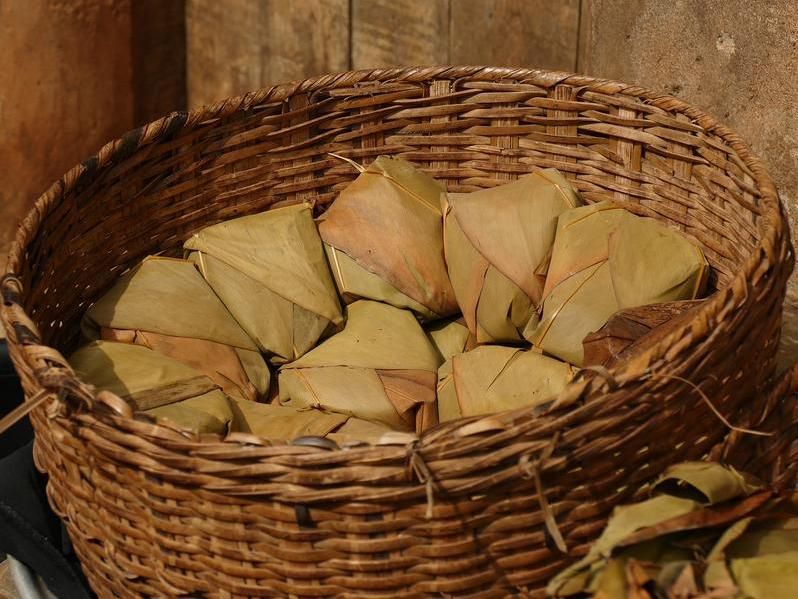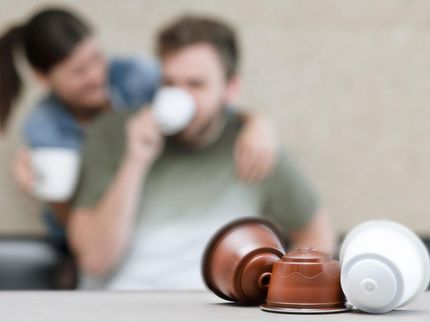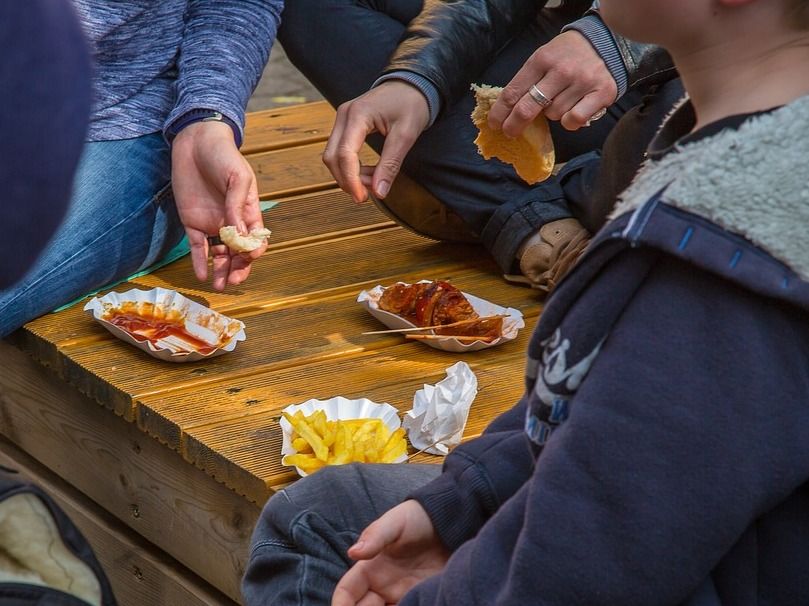Plant leaves as packaging alternative to plastic
Advertisement
How can food be preserved longer without resorting to fossil-based plastic packaging? Since 2018, the government of Benin has banned non-biodegradable plastic bags in view of the environmental problems caused by packaging waste. Scientists from the University of Bonn are now working with colleagues from the West African country to develop sustainable packaging made of natural materials such as banana leaves. The Federal Ministry of Food and Agriculture is supporting the "WALF-Pack" project for three years with 350,000 euros.

Fermented corn porridge (Akassa) packed in leaves of the plant Thalia welwitschii.
Barbara Götz
"As Benin is one of the poorest countries in the world, where more than one million people are still undernourished, the protection of food through packaging is particularly important," says Prof. Dr. Judith Kreyenschmidt, the project leader from the Institute of Animal Sciences at the University of Bonn. This protection is particularly important during transport, as valuable food is lost due to missing or suboptimal packaging. However, the excessive use of plastic as a packaging material can lead to severe environmental pollution, especially in countries such as Benin which do not have waste management systems.
For this reason, one aim of the "West African local food packaging" (WALF-Pack) project is to further develop old techniques of packaging with plant leaves and to optimise them by combining them with new technologies. Traditionally, many foods are still packaged in leaves of bananas or other local plants, such as various kinds of porridge. This is not only for protection, transport or presentation, but sometimes also for the taste of the product.
The project follows several approaches in packaging development: On the one hand, the further development of old techniques, on the other hand, the implementation of new sustainable materials such as bioplastics in combination with sustainable active coatings, so-called active packaging. These contain an active component that slows down the spoilage of the food. To ensure that the packaging is optimally developed for the local conditions, doctoral student Barbara Götz is regularly in Benin. The expertise of the network of local packaging companies, distributors, producers, non-governmental organizations (NGOs) and scientists from the University of Abomey-Calavi is bundled there to adapt the solutions to the local market in the best possible way.
Packaging made of water hyacinths
Together with the NGO "Jeunesse Et Emplois Verts Pour Une Economie Verte" (JEVEV), which produces baskets, bags and other articles of daily use from the dried stems of the water hyacinth, the suitability of this water plant as a local packaging material is being investigated. The water hyacinth is an invasive aquatic plant from South America, which grows rapidly under the environmental conditions in Africa and overgrows the lakes and rivers there. A recent laboratory study has shown that the harvested plants are not contaminated with heavy metals, which makes them suitable for use in contact with food. "In the future, the NGO JEVEV would like to expand its portfolio by producing paper on the basis of water hyacinths in order to create additional economic structures and jobs and to combine this with species and environmental protection," reports Barbara Götz. These conditions form a good basis for the development of sustainable packaging based on water hyacinth.
The Consortium
The consortium for the sustainability project consists of the University of Bonn and the University of Abomey-Calavi in Benin. It is supported by a network of producers, processing companies, public institutions and packaging companies. The Federal Ministry of Food and Agriculture is supporting the "WALF-Pack" project (Förder-KZ: 2816PROC08) for three years with 350,000 euros.
Note: This article has been translated using a computer system without human intervention. LUMITOS offers these automatic translations to present a wider range of current news. Since this article has been translated with automatic translation, it is possible that it contains errors in vocabulary, syntax or grammar. The original article in German can be found here.































































